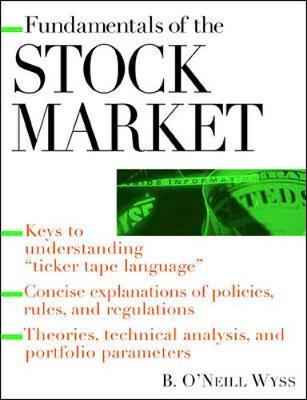
If the size of the firm is increased beyond the certain limit, the firm may get diseconomies of scale instead of economies. Therefore the firm must maximize the economies and minimize the dis-economies to sustain in the business for long term. These advantages which are gained by the companies are called as “Economies of Scale”. Pecuniary economies are those which can be had after paying less prices for the factors used in the process of production and distribution. Big firms can get raw material at the low price because they buy the same in the large bulk. In the same way, they enjoy a lot of concessions in bank borrowing and advertisements.

They can derive many benefits by jointly establishing the research. The concentrated firms may also popularize the quality of products through jointly giving advertisements. Factors that contribute to such advantages are outside the control of firms. Therefore, no firm gets a competitive advantage over others since the benefits are available equally to all firms. We can, therefore, conclude that concentration of industries lead to economies of concentration. Therefore, a firm producing on large scale can enjoy economies by the use of superior techniques.
Internal Economies of Scale
All the large sized firms are in a position to use its by-products and waste-material to produce another material and thus, supplement to their income. For instance, sugar industries make power, alcohol out of the molasses. When firms within the same industry cluster together, they can take advantage of the existing infrastructure and supply networks. Moreover, skilled workers tend to shift close to such clusters for work, thereby giving firms easy availability to labor.

Managerial economies refer to production in managerial costs and proper management of large scale firm. Under this, work is divided and subdivided into different departments. Each department is headed by an expert who keeps a vigil on the minute details of his department.
What is Internal Economies of Scale?
Technical economies of scale are achieved through the use of large-scale capital machines or production processes. The classic example of a technical internal economy of scale is Henry Ford’s assembly line. Another type occurs when firms purchase in bulk and receive discounts for their large purchases or a lower cost per unit of input. Cuts in administrative costs can cause marginal productivity to decline, resulting in economies of scale. When an industry expands in response to an increase in demand for its products, it experiences some external economies as well as some external diseconomies.
When the scale of production of a firm is increased, it enjoys numerous selling or marketing economies. In the marketing economies, we include advertisement economies, opening up of show rooms, appointment of sole distributors etc. Moreover, a large firm can conduct its own research to effect improvement in the quality of the product and to reduce the cost of production. The other economies of scale are advertising economies, economies from special arrangements with exclusive dealers.
Difference between Internal Economies and External Economies
This website includes study notes, research papers, essays, articles difference between internal and external economies and other allied information submitted by visitors like YOU.
- If borrowing costs decline across the entire economy because the government is engaged in expansionary monetary policy, the lower rates can be captured by multiple firms.
- The Large-scale firms get financial assistance easily in the form of borrowings, loans, credits at a low rate of interest.
- The large scale firms don’t need much labour force due to the use of machines in the firm.
- The large scale firms sell their products in many markets according to the customer preferences which helps them to enhance their brand value.
- Secondly, certain industries may become so important, they can develop bargaining power with politicians and local governments.
However, if the scale of production exceeds a specified limit, resulting in diseconomies of scale. Economies and Diseconomies of scale are classified as Internal and External Economies and Diseconomies of Scale. In this article, we are going to discuss the differences between internal and external economies of scale.
Economies of Specialization
In aspects of selling and distributing the products, the large-scale firms get many benefits. It is purely based on the outcomes and the unique capabilities of the company. Those are typically the unit cost advantages for the company when expanding its scale of production. Economies of Scale is which the company grows bigger and better it will experience cost decreases along with the increase in its level of output. Simply the cost per unit of an individual item decreases when increasing the scale of production.

Prof. Robertson visualizes a situation in which a firm realizes both internal and external-economies simultaneously. Therefore, when we look at these economies in the background of the whole economy latter as one unit, they seem to be primarily internal economies. Economies of information is obtained if many firms are concentrated at one particular place.
But consequent upon availability of cheaper steel, other firms that use steel as a raw material shall find reduction in their cost of production. These firms use various strategies to manage their workforce effectively. They can afford to recruit highly talented managers into their firm which helps the company to achieve greater levels of business.
This is related to operational efficiencies and synergies as a result of an increase in the level of production. The simple meaning is that companies tend to do things more efficiently with increasing size. In brief, internal and external economies are closely related and interdependent on each other. The Large-scale firms get financial assistance easily in the form of borrowings, loans, credits at a low rate of interest.
External economies of scale can happen because of positive and negative externalities. Positive externalities include a trained or specialized workforce, relationships between suppliers, and/or more innovation. Negative ones happen at the industry levels and are often called external diseconomies.
A firm producing on large scale enjoys the economies of transport and storage. A big firm can have its own means of transportation to carry finished as well as raw material from one place to another. Moreover, big firms also enjoy the economies of storage facilities. Therefore, these firms can store their products when prices are unfavorable in the market. Economist Alfred Marshall first differentiated between internal and external economies of scale. He suggested broad declines in the factors of production—such as land, labor, and effective capital—represented a positive externality for all firms.
- External economies of scale are generally described as having an effect on the whole industry.
- Explore the principle of economies of scale and delve into several real-world examples.
- Bigger firms having more resources at their disposal are able to install the most suitable machinery.
- Economies of scale are the reason why certain monopolies are allowed to exist by the government.
It is purely based on the external factors which common for the entire industry. Those are typically the unit cost advantages for the company from the advancement of their industry. There are several contributing factors behind external economies of scale. When competing companies set up shop in one area, specialized workers will seek employment.
For example, if the government imposes higher tariffs on the import of a certain good, then it is beneficial for all domestic firms producing that good since it reduces their competition. These reductions shall be in the form of external economies for the steel users. But for the whole economy, reduction in cost either for steep producers or for steel users amounts to an internal economy. (i) The firms producing output on a large scale purchase raw material in bulk quantity.
China’s July exports and imports decline by 14.5%, overshooting predictions – Republic World
China’s July exports and imports decline by 14.5%, overshooting predictions.
Posted: Tue, 08 Aug 2023 03:44:00 GMT [source]
The prospect of external economies of scale often induce firms in the same industry to cluster together. When one firm is well established in a particular region, it can access a developed transportation network, connections with suppliers, and a ready workforce. New firms emerging within the industry would like to take advantage of the existing infrastructure and settle close to the older firm. Internal economies of scale are different from external ones since the former include factors that are unique to an individual firm.
